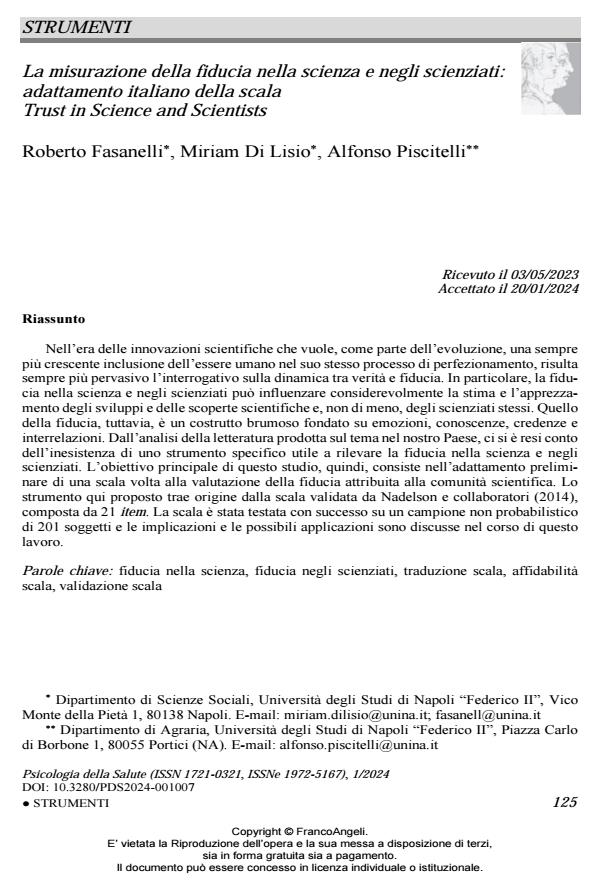Measuring Trust in Science and Scientists: Italian Adaptation of the Trust in Science and Scientists Inventory
Journal title PSICOLOGIA DELLA SALUTE
Author/s Roberto Fasanelli, Miriam Di Lisio, Alfonso Piscitelli
Publishing Year 2024 Issue 2024/1
Language Italian Pages 15 P. 125-139 File size 264 KB
DOI 10.3280/PDS2024-001007
DOI is like a bar code for intellectual property: to have more infomation
click here
Below, you can see the article first page
If you want to buy this article in PDF format, you can do it, following the instructions to buy download credits

FrancoAngeli is member of Publishers International Linking Association, Inc (PILA), a not-for-profit association which run the CrossRef service enabling links to and from online scholarly content.
In the era of scientific innovations that want, as part of evolution, an ever-increasing inclusion of human beings in its refinement process, the question of the dynamic be-tween truth and trust becomes increasingly pervasive. Trust in Science and Scientists can considerably influence the esteem and appreciation of scientific developments and dis-coveries and, no less, of scientists themselves. That trust, however, is a brute construct based on emotions, knowledge, beliefs, and interrelationships. From the literature analy-sis on the topic in our country, it was realized that no specific instrument is helpful for surveying Trust in Science and Scientists. Therefore, this study’s main objective is the preliminary adaptation of a scale aimed at assessing the trust attributed to the scientific community. The instrument proposed here originates from the scale validated by Nadel-son and collaborators (2014), which consists of 21 items. The scale was successfully tested on a non-probability sample of 201 subjects, and the implications and possible applications are discussed throughout this paper.
Keywords: Trust in Science, Trust in Scientists, scale translation, scale reliability, scale validation
- Scientific reasoning scale in Italy: Validation studies Rossella Caliciuri, Margherita Lanz, in Thinking Skills and Creativity 102064/2026 pp.102064
DOI: 10.1016/j.tsc.2025.102064
Roberto Fasanelli, Miriam Di Lisio, Alfonso Piscitelli, La misurazione della fiducia nella scienza e negli scienziati: adattamento italiano della scala Trust in Science and Scientists in "PSICOLOGIA DELLA SALUTE" 1/2024, pp 125-139, DOI: 10.3280/PDS2024-001007